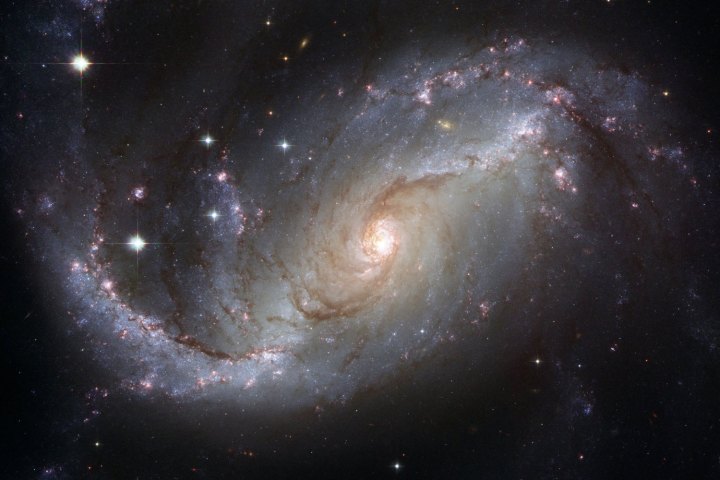
This is bad news for astronomers, who had hoped the 2018 launch of the James Webb Space Telescope would give a clearer view of the heavens. The Hubble Telescope experienced issues with resolution due to man-made mistakes in construction, but the limits on the James Webb telescope and future versions may be scientifically related.
Think of it this way: light from distant galaxies travels extraordinary distances to reach the lenses of our telescopes. If there is anything between those galaxies and the telescope itself to disturb that light along the way, it will arrive here blurry — and no telescope is going to be able to fix that.
This may be happening in the vast space between these galaxies due to quantum mechanics. On the smallest of scales, known as the “Planck Scale,” quantum physics infers that space is filled with particles that develop and quickly destroy each other. While these reactions are very, very small, it’s enough to cause ripples in the fabric of space-time. Just like light passing through Earth’s atmosphere, the light from these distant galaxies and objects become distorted.
While this may be bad news for astronomers hoping for clearer pictures of distant celestial objects, the whole concept of quantum mechanics (and quantum physics for that matter) is still a highly controversial and debated topic. This means that such a prediction might be wrong if currently accepted theories of quantum physics are incorrect. But if it is correct, it only shows us how little we may ever know of our universe, thanks to its massive size.
Editors' Recommendations
- James Webb researcher on how telescope will investigate exoplanet atmospheres
- James Webb researcher reveals how it will investigate the early universe
- How to watch the James Webb Space Telescope deploy its sunshield this week
- James Webb Space Telescope launched on mission to uncover secrets of the universe
- How to watch the James Webb Space Telescope launch to space


